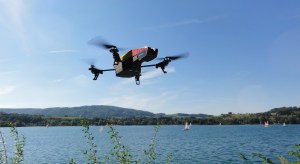NASA commissions experimental ‘low boom’ supersonic jumbo jet

NASA is commissioning an experimental aircraft that aims to produce quieter sonic booms, in the hope that it will make supersonic jet travel available once again.
Since Concorde, an Anglo-French plane designed in the 1960’s, was withdrawn from service in 2003, there has not been a commercial jumbo jet capable of faster-than-sound flight, but NASA scientists hope to spur its reintroduction.
The experimental plane, the first in a series of “X-planes” that NASA will commission as part of its New Aviation Horizons initiative, seeks efficiency across the board: Officials say it will be faster, more fuel efficient, and safer than conventional tube and wing commercial jet designs.
“NASA is working hard to make flight greener, safer and quieter — all while developing aircraft that travel faster, and building an aviation system that operates more efficiently,” said agency Administrator Charles Bolden.
“To that end, it’s worth noting that it’s been almost 70 years since Chuck Yeager broke the sound barrier in the Bell X-1 as part of our predecessor agency’s high speed research,” noted Bolden. “Now we’re continuing that supersonic X-plane legacy with this preliminary design award for a quieter supersonic jet with an aim toward passenger flight.”
Supersonic jets emit a sonic “boom” upon breaking the sound barrier — an explosive sound that exceeds acceptable levels of noise for commuter aircraft flying over populated areas. By reducing this thunderclap to a less noisy “heartbeat,” NASA hopes to boost the X-plane’s range of possible destinations to include overland routes.
NASA awarded the $20 million initial design contract to Lockheed Martin during an event at Ronald Reagan Washington National Airport in Arlington, Va., Monday. Lockheed will draw up preliminary plans for the Quiet Supersonic Technology, deemed QueSST, in collaboration with subcontractors from GE Aviation and Tri Models Inc. Though construction will be limited to a test model, it will be subject to analytical validation to include wind tunnel trials.
The main production phase of the X-plane project will fall under a future contract competition.
The planes are expected to be in the air by 2020, and will measure in at around half the size of current large commuter jets. NASA officials said that they will “likely” flown by an onboard human pilot.
“Developing, building and flight testing a quiet supersonic X-plane is the next logical step in our path to enabling the industry’s decision to open supersonic travel for the flying public,” said Jaiwon Shin, associate administrator for NASA’s Aeronautics Research Mission.





